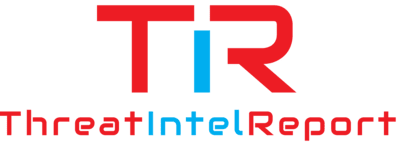In the June 2024 Patch Tuesday updates, Microsoft addressed a critical remote code execution (RCE) vulnerability in Microsoft SharePoint Server. This vulnerability, identified as CVE-2024-33210, allows attackers to execute arbitrary code on SharePoint servers if successfully exploited. Given SharePoint’s widespread use in corporate environments for document management and collaboration, this vulnerability poses a significant risk, particularly in organizations with exposed or misconfigured SharePoint servers.
What is CVE-2024-33210?
CVE-2024-33210 is a critical remote code execution (RCE) vulnerability that affects Microsoft SharePoint Server. This flaw enables an attacker to exploit SharePoint’s web-based interface to remotely execute malicious code. The attacker would need to submit a specially crafted request to a vulnerable SharePoint instance, which can be used to execute commands at the server level with elevated privileges.
Once successfully exploited, this vulnerability could allow attackers to:
- Gain administrative control over the SharePoint server.
- Install malware, such as ransomware or spyware, on the server.
- Exfiltrate sensitive corporate data stored in SharePoint document libraries.
- Potentially compromise connected systems, such as file servers, databases, or other parts of the corporate network(CyberSec UK)(CyberSec UK).
Exploitation Methods
The exploitation of CVE-2024-33210 involves sending specially crafted HTTP requests to the vulnerable SharePoint server. The request leverages a flaw in how SharePoint processes certain types of input, enabling the attacker to execute commands remotely. Attackers can use various approaches, including:
- Phishing attacks: Using social engineering techniques to lure users into visiting a malicious SharePoint link, thereby triggering the RCE vulnerability.
- Malicious web requests: Directly sending requests to exposed SharePoint servers, particularly those that are internet-facing, making them accessible to attackers remotely.
- Insider threats: Malicious insiders with lower-level access could exploit this flaw to escalate privileges and gain control over the SharePoint infrastructure(CyberSec UK)(CyberSec UK).
Given SharePoint’s use in storing and managing sensitive business documents, this vulnerability could result in significant data breaches or supply chain attacks, where attackers manipulate documents or workflows to compromise connected systems.
Active Exploitation and Proof of Concept (PoC)
As of June 2024, there were no confirmed reports of CVE-2024-33210 being actively exploited in the wild. However, given the critical nature of the vulnerability and its potential impact on large-scale corporate environments, it is expected that proof-of-concept (PoC) exploits could emerge soon after the patch release.
Security researchers frequently develop and publish PoCs shortly after Microsoft releases patches, which could lead to increased attempts at exploitation by threat actors. Organizations that delay patching their SharePoint instances may face heightened risks as these PoCs become publicly available(
Why SharePoint is a High-Value Target
SharePoint is widely deployed in organizations across multiple sectors, from healthcare and finance to government and education. It is often used for:
- Document management: Sensitive corporate files, contracts, and internal communications are typically stored in SharePoint.
- Collaboration: Teams frequently use SharePoint to manage workflows, meaning that a compromise could disrupt business processes.
- Integration with other systems: SharePoint is often integrated with other critical business applications like Microsoft Teams, OneDrive, and Exchange, making it a high-value target for attackers who want to compromise broader network infrastructure(CyberSec UK).
With its heavy reliance in corporate environments, a successful attack on a SharePoint server could grant attackers a foothold in an organization’s network, leading to further exploitation and data theft.
Mitigation and Patch Recommendations
To mitigate the risk posed by CVE-2024-33210, organizations should take the following actions:
- Apply Microsoft’s June 2024 Patch Immediately: Microsoft’s official patch addresses this critical RCE vulnerability, and administrators are strongly advised to update their SharePoint servers as soon as possible.
- Limit Access to SharePoint Servers: Ensure that SharePoint servers are not unnecessarily exposed to the internet. Restrict access to trusted IP addresses and utilize firewall protections to reduce the attack surface.
- Regularly Audit User Permissions: Regular audits of SharePoint permissions can help identify potential privilege escalation risks and ensure that sensitive documents are not overexposed.
- Implement Network Security Monitoring: Monitor network traffic for unusual activity, especially incoming requests targeting SharePoint instances. Intrusion detection systems (IDS) or intrusion prevention systems (IPS) can help identify potential exploit attempts(CyberSec UK)(CyberSec UK).
The CVE-2024-33210 vulnerability in Microsoft SharePoint Server represents a critical security risk, particularly for organizations that rely on SharePoint for document management and collaboration. While no active exploits have been confirmed at the time of patch release, the risk of exploitation remains high, especially as researchers may soon develop PoCs. Organizations should apply the June 2024 Patch Tuesday updates immediately, implement network protections, and limit access to their SharePoint environments to mitigate potential risks.
Further Reading
- Microsoft SharePoint Server Security Updates – June 2024
- Understanding Remote Code Execution (RCE) Vulnerabilities
- Best Practices for Securing SharePoint Servers
